Teaching by example often demonstrates to children the correct or compassionate way to do something. What better way to teach by example than to use a story where a girl or boy, woman or man, behaves in ways that show care and concern for others? Through some of the stories reviewed in this week’s columns, teachers can share with their students how compassion guides the decision-making processes to help other people. In light of the many bullying lessons in today’s classrooms, the following stories present human behavior in a positive light and provide wonderful examples for children to learn by doing people-centered things.
Ages 4–8
If You Plant a Seed. Kadir Nelson. 2015. Balzer + Bray/HarperCollins.
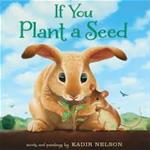 Illustrated in the always-beautiful oil on canvas illustrations of award-winning Kadir Nelson, this fable-like story uses the garden metaphor for growing kindness, though it doesn’t always begin that way.
Illustrated in the always-beautiful oil on canvas illustrations of award-winning Kadir Nelson, this fable-like story uses the garden metaphor for growing kindness, though it doesn’t always begin that way.
Rabbit and mouse plant a tiny garden and faithfully nurture their few vegetables. When their efforts are rewarded and the luscious-looking plants are ready to pick, all sorts of birds arrive to share in the harvest.
A food fight ensues as rabbit and mouse protect their bounty. However, at one tomato-splattered moment, mouse at last offers one tomato that is still intact to the birds and a branch of friendship and sharing is established. Soon after, the birds return with a huge amount of seeds and a new very large garden is planted and will soon be ready to share with the animal friends. An extensive Teacher’s Guide is available from the publisher.
Oscar Lives Next Door: A Story Inspired by Oscar Peterson’s Childhood. Bonnie Farmer. Ill. Marie Lafrance. 2015. Owlkid.
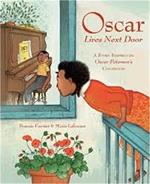 Author and teacher Bonnie Farmer grew up in the same neighborhood of St. Henri in Montreal, Canada, as did young Oscar Peterson. This book is inspired by the neighborhood they shared though Peterson grew up in the 1930s, decades before Farmer lived there. The fictionalized story is told though the voice of his next-door neighbor and best friend, Millie. Millie loves hearing the musical sounds coming from the house next door as Oscar and his brothers and sisters make music, especially Oscar’s beloved trumpet. But one day Oscar becomes sick, and his cough becomes worse and a fever complicates his illness. He is diagnosed with tuberculosis and must go to the hospital. Millie is not allowed to visit and when she hears how lonely he is and won’t speak to anyone, she sends him all her best wishes in a card reminding him of all the fun they used to have. When Oscar returns home, he can no longer play the trumpet because of the damage to his lungs. Oscar starts to play the piano, and with Millie’s encouragement, along with his own natural talent as a musician, Oscar becomes a piano virtuoso. Author notes at the end provide background factual information about Peterson. Teachers might like to bring this music into their classrooms starting with the piano lesson interview with television host, Dick Cavat.
Author and teacher Bonnie Farmer grew up in the same neighborhood of St. Henri in Montreal, Canada, as did young Oscar Peterson. This book is inspired by the neighborhood they shared though Peterson grew up in the 1930s, decades before Farmer lived there. The fictionalized story is told though the voice of his next-door neighbor and best friend, Millie. Millie loves hearing the musical sounds coming from the house next door as Oscar and his brothers and sisters make music, especially Oscar’s beloved trumpet. But one day Oscar becomes sick, and his cough becomes worse and a fever complicates his illness. He is diagnosed with tuberculosis and must go to the hospital. Millie is not allowed to visit and when she hears how lonely he is and won’t speak to anyone, she sends him all her best wishes in a card reminding him of all the fun they used to have. When Oscar returns home, he can no longer play the trumpet because of the damage to his lungs. Oscar starts to play the piano, and with Millie’s encouragement, along with his own natural talent as a musician, Oscar becomes a piano virtuoso. Author notes at the end provide background factual information about Peterson. Teachers might like to bring this music into their classrooms starting with the piano lesson interview with television host, Dick Cavat.
A Passion for Elephants: The Real Life Adventure of Field Scientist Cynthia Moss. Toni Buzzeo. Ill. Holly Berry. 2015. Dial.
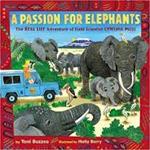 Though Cynthia Moss has written and shared many books and articles about elephants, this book by Toni Buzzeo concentrates on Moss herself and the animals that she grew to love over her lifetime.
Though Cynthia Moss has written and shared many books and articles about elephants, this book by Toni Buzzeo concentrates on Moss herself and the animals that she grew to love over her lifetime.
From the time she was a small child, she loved large animals. Elephants became her passion, and she gave up her comfortable life in New York to move to Africa to study and protect them. As a scientist, reporter, and photographer, she has spent more than 40 years in Amboseli National Park in Kenya studying elephants. African motif illustrations by Holly Berry add to the rich background of the information about Kenya and Moss’s beloved elephants. This book will give young readers a look at how a person can follow a passion that begins in childhood onto a career path that can last a lifetime.
Teachers might like to share the website Amboseli Trust for Elephants that author Cynthia Moss directs and use this short video narrated by Moss to provide a visual look at her work with elephants at Amboseli National Park or this short video entitled Elephant Woman.
Ages 9–11
For the Right to Learn: Malala Yousafzai’s Story. Rebecca Langston-George. Ill. Janna Bock. 2016. Capstone.
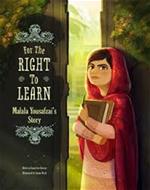 From Capstone’s Encounter: Narrative Nonfiction Picture Books series, the story of the young Pakistani girl who stood up for her right to learn is brought to young readers by teacher/author Rebecca Langston-George. Growing up in Mingora in the Swat Valley of Pakistan, her father ran a school and so Malala developed her love of learning at a very young age. This was unusual for children in Pakistan, as not many children had the opportunity to attend school, especially girls. Again, under the influence and tutelage of her father, Malala, as well as her mother, became educated. When the Taliban took control of their part of Pakistan, they exerted an intolerant control over education and threatened teachers and school leaders to stop the education of girls. As Taliban intimidation and violence grew stronger, many children stopped going to school. As this terror was spreading Malala and her father continued to speak to clubs and organization, wrote letters to newspapers, and made contacts with journalists to advocate for education. In December 2008, girls were absolutely forbidden to go to school. With the support of the BBC, Malala began to blog about the importance of an education and described what it was like to be denied the right to learn. Malala’s family was finally forced to leave the area, but she became even more active as a spokesperson for learning. On Oct. 9, 2012, Malala was stopped by the Taliban and shot for her efforts to support education for girls. Her life hung in the balance for a while, but as recovery finally came for her, so did the support of the world, as a global focus came into her life and recognized her passion for standing up for the rights of education. Teachers might like to use this interview with the author to share with students how authors develop an idea for a book.
From Capstone’s Encounter: Narrative Nonfiction Picture Books series, the story of the young Pakistani girl who stood up for her right to learn is brought to young readers by teacher/author Rebecca Langston-George. Growing up in Mingora in the Swat Valley of Pakistan, her father ran a school and so Malala developed her love of learning at a very young age. This was unusual for children in Pakistan, as not many children had the opportunity to attend school, especially girls. Again, under the influence and tutelage of her father, Malala, as well as her mother, became educated. When the Taliban took control of their part of Pakistan, they exerted an intolerant control over education and threatened teachers and school leaders to stop the education of girls. As Taliban intimidation and violence grew stronger, many children stopped going to school. As this terror was spreading Malala and her father continued to speak to clubs and organization, wrote letters to newspapers, and made contacts with journalists to advocate for education. In December 2008, girls were absolutely forbidden to go to school. With the support of the BBC, Malala began to blog about the importance of an education and described what it was like to be denied the right to learn. Malala’s family was finally forced to leave the area, but she became even more active as a spokesperson for learning. On Oct. 9, 2012, Malala was stopped by the Taliban and shot for her efforts to support education for girls. Her life hung in the balance for a while, but as recovery finally came for her, so did the support of the world, as a global focus came into her life and recognized her passion for standing up for the rights of education. Teachers might like to use this interview with the author to share with students how authors develop an idea for a book.
Ira’s Shakespeare Dream. Glenda Armand. Ill. Floyd Cooper. 2015. Lee & Low.
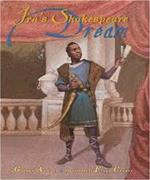 Ira Aldridge was born in 1807, the son of free black parents in New York City. The son of a minister, Ira inherited his father’s great voice for oratory but instead of following his father’s choice for him to become a minister, Ira had developed a passion for the theater. He learned about the African Grove, an all-black venue, where he really discovered his love of acting. Though discouraged by both his father and his teacher, he left New York and sailed for England. Though his acting career was a long and difficult journey, he eventually landed the part of Othello and the world of Shakespeare opened up for him. His fame in European theaters grew, and he became a well-known and successful Shakespearean actor. Throughout his successful career, he never forgot the plight of the slaves at home and sent money to the United States and became a spokesman for abolition while in Europe. This beautiful picture book, illustrated with the oil-wash illustrations of Floyd Cooper with his signature-kneaded erasures, provide the stage for the life of Ira Aldridge. An extensive teacher’s guide with CCSS correlations is available from the publisher’s website.
Ira Aldridge was born in 1807, the son of free black parents in New York City. The son of a minister, Ira inherited his father’s great voice for oratory but instead of following his father’s choice for him to become a minister, Ira had developed a passion for the theater. He learned about the African Grove, an all-black venue, where he really discovered his love of acting. Though discouraged by both his father and his teacher, he left New York and sailed for England. Though his acting career was a long and difficult journey, he eventually landed the part of Othello and the world of Shakespeare opened up for him. His fame in European theaters grew, and he became a well-known and successful Shakespearean actor. Throughout his successful career, he never forgot the plight of the slaves at home and sent money to the United States and became a spokesman for abolition while in Europe. This beautiful picture book, illustrated with the oil-wash illustrations of Floyd Cooper with his signature-kneaded erasures, provide the stage for the life of Ira Aldridge. An extensive teacher’s guide with CCSS correlations is available from the publisher’s website.
Ages 12–14
Elephant Man. Mariangela Di Fiore. Ill. Hilde Hodnefjeld. Translated by Rosie Hedger. 2015. Annick.
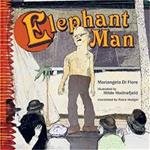 If ever there were a true story to elicit compassion for a human being, it is the story of Joseph (John) Merrick who became known as the Elephant Man. Born with tumors and deformities of body that appear to be grotesque to many, this young boy grew up to become part of an oddities collection of people for the Whitechapel Road theater in London in the early 1800s. The opening paragraph in the book represents the humiliation that Joseph endured most of his life; “Gather round—prepare to be amazed! … A sight so disgusting, so very gruesome, that you simply won’t believe it until you see it with your own eyes. Ladies and gentlemen! It is my honor to introduce … the Elephant Man!” When Dr. Frederick Treves heard about this disfigured creature appearing in the theater, he decided he wanted to find out more about him. Dr. Treves wanted Joseph to go with him to the London Hospital to look into the causes of the tumors. Sadly, Tom Norman, the theater owner, decided to take his show on tour throughout Europe and Joseph went with the show. It was on this tour that people flocked to the show to gape at Joseph. After several unfortunate experiences including the theft of all the money Joseph had saved, with great difficulty and many heartbreaking experiences, Joseph made his way back to England and searched for Dr. Treves.
If ever there were a true story to elicit compassion for a human being, it is the story of Joseph (John) Merrick who became known as the Elephant Man. Born with tumors and deformities of body that appear to be grotesque to many, this young boy grew up to become part of an oddities collection of people for the Whitechapel Road theater in London in the early 1800s. The opening paragraph in the book represents the humiliation that Joseph endured most of his life; “Gather round—prepare to be amazed! … A sight so disgusting, so very gruesome, that you simply won’t believe it until you see it with your own eyes. Ladies and gentlemen! It is my honor to introduce … the Elephant Man!” When Dr. Frederick Treves heard about this disfigured creature appearing in the theater, he decided he wanted to find out more about him. Dr. Treves wanted Joseph to go with him to the London Hospital to look into the causes of the tumors. Sadly, Tom Norman, the theater owner, decided to take his show on tour throughout Europe and Joseph went with the show. It was on this tour that people flocked to the show to gape at Joseph. After several unfortunate experiences including the theft of all the money Joseph had saved, with great difficulty and many heartbreaking experiences, Joseph made his way back to England and searched for Dr. Treves.
Under the very caring medical care of Dr. Treves that developed into a friendship, Joseph thrived and his inner personality and talents were able to unfold. Using most unusual illustrations and antique photographs, a collage of mixed-media artwork provides a perfect backdrop to present the life of Joseph Merrick.
Terrible Typhoid Mary: A True Story of the Deadliest Cook in America. Susan Campbell Bartoletti. 2015. Houghton Mifflin Harcourt Books for Young Readers.
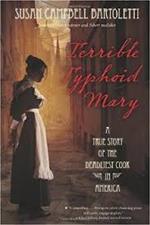 Who was Typhoid Mary? So little is known about the woman who became known as Typhoid Mary, but award-winning author and fact-finder researcher extraordinaire Susan Campbell Bartoletti has investigated the life of Irish immigrant Mary Mallon and pieced together what history believes happened to this woman who purportedly spread typhoid to perhaps 50+ people in New York in 1906. When public health officials discovered that Mary was a “healthy carrier,” she was directed to spend most of the rest of her life in quarantine in hospitals. Mary did not respond to this imprisonment willingly and several escape incidents took place. The book calls to question the power of the health department versus the rights of the individual to dictate that type of imprisonment. A life sentence? Readers will come away with a 21st-century background of public health medicine juxtaposed against the 19th-century way of handling public health safety. Click here for the educator’s guide that accompanies this book.
Who was Typhoid Mary? So little is known about the woman who became known as Typhoid Mary, but award-winning author and fact-finder researcher extraordinaire Susan Campbell Bartoletti has investigated the life of Irish immigrant Mary Mallon and pieced together what history believes happened to this woman who purportedly spread typhoid to perhaps 50+ people in New York in 1906. When public health officials discovered that Mary was a “healthy carrier,” she was directed to spend most of the rest of her life in quarantine in hospitals. Mary did not respond to this imprisonment willingly and several escape incidents took place. The book calls to question the power of the health department versus the rights of the individual to dictate that type of imprisonment. A life sentence? Readers will come away with a 21st-century background of public health medicine juxtaposed against the 19th-century way of handling public health safety. Click here for the educator’s guide that accompanies this book.
Ages 15+
Elena Vanishing: A Memoir. Elena Dunkle. 2015. Chronicle.
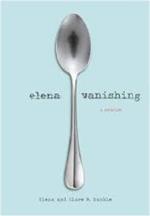 Based on the real-life experience of Elena Dunkle’s struggle with anorexia, this memoir is cowritten with her mother. Her mother, author Clare Dunkle, also has written the partner book for Elena’s memoir and relates her experience as the parent dealing with her daughter’s eating disorder in the book entitled Hope and Other Luxuries. Elena is diagnosed at 17, and her memoir explains some of the emotional trauma she was dealing with that led to anorexia. An overachieving child, Elena traces the beginnings of her food difficulties to her childhood and on to her early teen years. When she finally begins treatment, there is a two-year jump in her journey that creates a void for the reader, but Elena manages to get back on track and, with help, conquers this disease. Her journey was never a quick fix and her bouts with anorexia span her young life. At the same time, her mother is dealing with this illness as well, as she witnesses her daughter wasting away and is searching for the means to help her. This true story could be a valuable therapeutic tool for other young teens experiencing emotional trauma and looking for ways to cope. Read more about the author and her experience at her website. A reading group guide is available at the publisher’s website.
Based on the real-life experience of Elena Dunkle’s struggle with anorexia, this memoir is cowritten with her mother. Her mother, author Clare Dunkle, also has written the partner book for Elena’s memoir and relates her experience as the parent dealing with her daughter’s eating disorder in the book entitled Hope and Other Luxuries. Elena is diagnosed at 17, and her memoir explains some of the emotional trauma she was dealing with that led to anorexia. An overachieving child, Elena traces the beginnings of her food difficulties to her childhood and on to her early teen years. When she finally begins treatment, there is a two-year jump in her journey that creates a void for the reader, but Elena manages to get back on track and, with help, conquers this disease. Her journey was never a quick fix and her bouts with anorexia span her young life. At the same time, her mother is dealing with this illness as well, as she witnesses her daughter wasting away and is searching for the means to help her. This true story could be a valuable therapeutic tool for other young teens experiencing emotional trauma and looking for ways to cope. Read more about the author and her experience at her website. A reading group guide is available at the publisher’s website.
Three More Words. Ashley Rhodes-Courter. 2015. Atheneum.
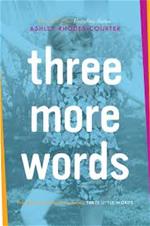 This sequel to her best-selling memoir Three Little Words (2008)continues the story of life after the foster care system when Ashley is an adult and starting her new life. The author is now writing from the perspective of a foster parent as she has become part of the system but is speaking from the other side. She is also a biological mother and an adoptive parent. Describing the system from the parental point of view can be as heartbreaking, she learned. She also goes on to give this memoir the details of her young adult life from lap-band surgery, to her wedding where her biological relatives invade, to getting pregnant, and then on to her life as a foster parent. Readers who enjoyed the first book will want to read what came next for Ashley as she views the child welfare system now from both sides.
This sequel to her best-selling memoir Three Little Words (2008)continues the story of life after the foster care system when Ashley is an adult and starting her new life. The author is now writing from the perspective of a foster parent as she has become part of the system but is speaking from the other side. She is also a biological mother and an adoptive parent. Describing the system from the parental point of view can be as heartbreaking, she learned. She also goes on to give this memoir the details of her young adult life from lap-band surgery, to her wedding where her biological relatives invade, to getting pregnant, and then on to her life as a foster parent. Readers who enjoyed the first book will want to read what came next for Ashley as she views the child welfare system now from both sides.
Listen to a detailed interview with the author from the television show Daytime.
Karen Hildebrand is retired library media specialist and library director for Delaware City Schools in Delaware, OH. She is currently an adjunct professor at Ashland University in Ohio, a reading consultant, and a Holocaust Fellow at the United States Holocaust Memorial Museum in Washington, DC. She also chairs the Education Curriculum Committee for the Delaware County Historical Society.
The review contributions are provided by members of the International Literacy Association’s Children’s Literature and Reading Special Interest Group.